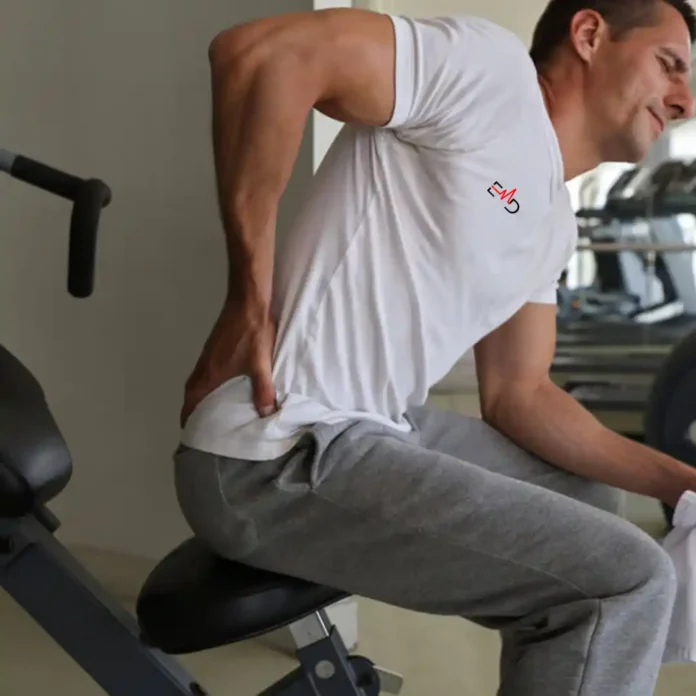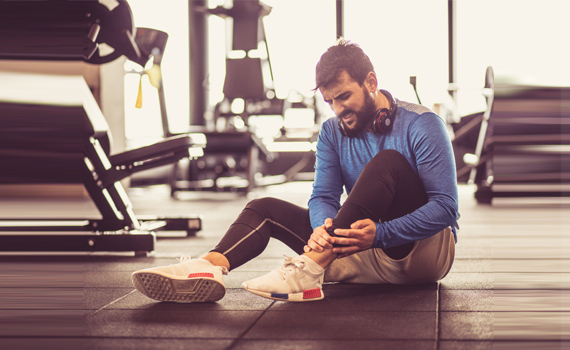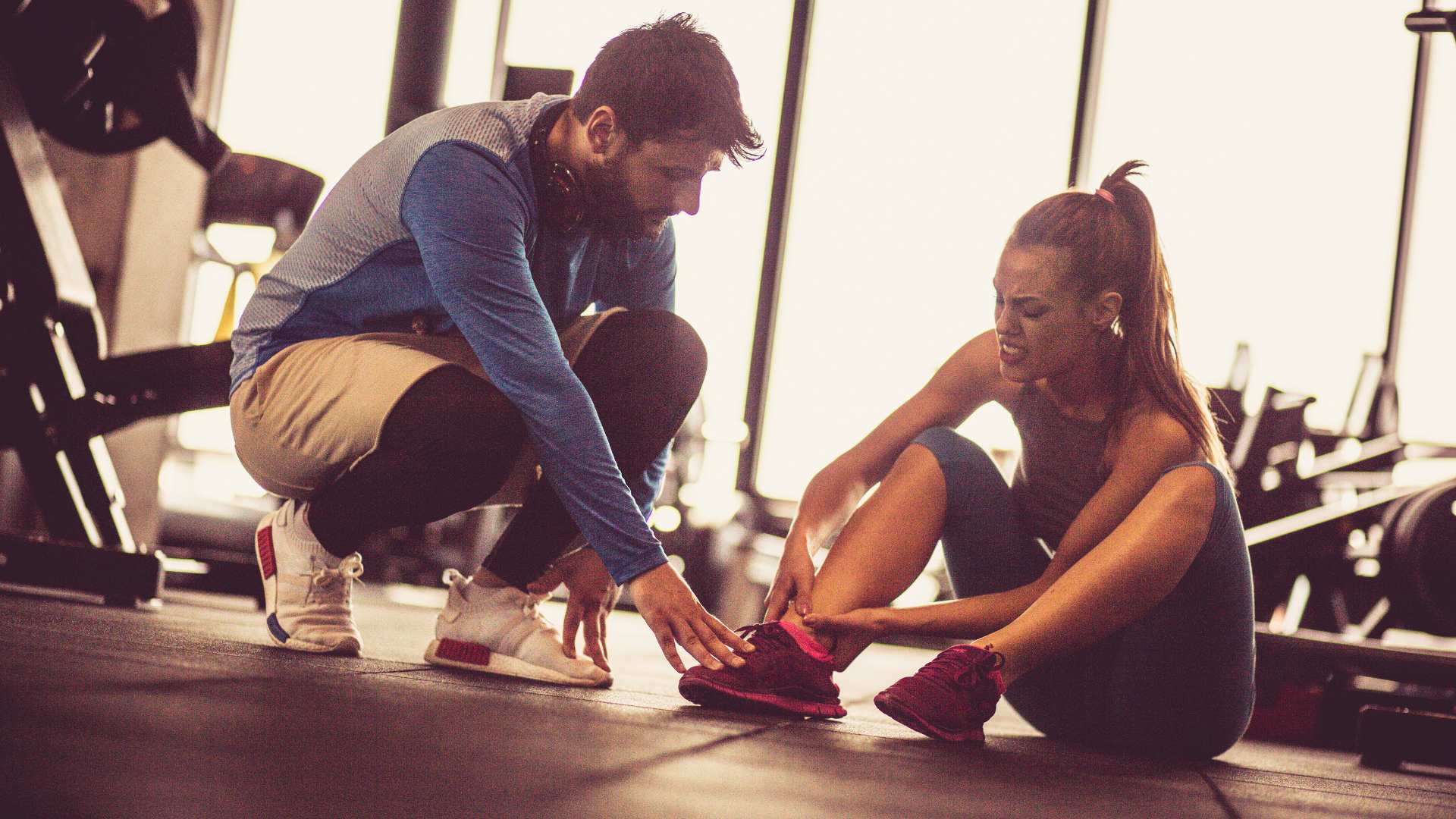
Exercise Daily – Regular exercise is one of the best ways to stay healthy, but injuries can happen if precautions aren’t taken. Sports medicine experts emphasize the importance of warming up to help prevent injuries like sprains, strains, and shin splints. Every workout should begin with dynamic stretching exercises, which help your body get ready for exercise and increase flexibility. It’s also important to wear good running shoes to avoid injuries. Ensure you use good form and posture to prevent muscle strain and overuse injuries, such as shin splints and tendinitis.
When starting a new workout program, it’s essential to start slowly and build up your fitness level to avoid injury. Repeating the same muscle movements too frequently can lead to overuse injuries, so find ways to vary your workout. Stop the exercise and consult a health care professional if you feel pain or discomfort. Stretch after you warm up, and always cool down to bring your heart rate back to normal. No matter how careful you are, some injuries may be unavoidable, but these steps can help you avoid many exercise-related injuries and keep your routine pain-free.

Why Exercise is Important
Exercise isn’t just about aesthetics or staying in shape; it’s vital for physical and mental health. Regular activity helps manage your weight, reduces the risk of chronic diseases like heart disease and diabetes, boosts your mood, and strengthens your immune system. However, despite all the health benefits, exercise also carries risks if not done properly. Failing to take the right precautions can lead to injuries that range from minor discomfort to severe conditions requiring medical attention.
The Physical Benefits of Exercise
On a physiological level, exercise strengthens muscles, bones, and joints. Weight-bearing exercises, like lifting weights or running, promote bone density and joint health. Cardiovascular activities like running or cycling improve heart health, lung capacity, and circulation. These benefits, however, come at a cost if performed without attention to technique, rest, and injury prevention.
The Mental Health Benefits of Exercise
Exercise is a powerful tool for mental health management. It releases endorphins, which can help reduce stress, anxiety, and depression. However, an injury can put a halt to these benefits and may even lead to frustration or emotional distress. Injuries can impede progress, disrupt routines, and create a barrier to enjoying the mental clarity that regular exercise provides.
Common Workout Injuries
Unfortunately, workout injuries are more common than you might think. Accidents can happen whether you’re just starting or a seasoned athlete. Understanding common injuries is key to preventing them in the future. Below are some of the most frequently encountered injuries during exercise.
Sprains and Strains
Sprains occur when a ligament, the tissue connecting two bones, is stretched or torn. This injury is common in the ankles and wrists and often occurs due to a sudden twist or fall. Strains, on the other hand, involve muscles or tendons being overstretched or torn. These injuries often occur due to overuse, lack of flexibility, or improper technique. Preventing these injuries requires mindful movement, proper form, and not pushing your body beyond its limits.
Shin Splints and Knee Pain
Due to repetitive stress, shin splints occur when the muscles and tendons around the tibia (shinbone) become inflamed. They are especially common in runners and people who suddenly increase their workout intensity. Knee pain often arises from poor alignment during exercises like squats or lunges or due to overuse. Wearing the right footwear and focusing on leg muscle strength can help minimize the risk of these painful injuries.
Back Injuries
Back injuries, such as muscle strains or herniated discs, are common among weightlifters or anyone who exercises with poor posture. Often, back injuries result from lifting heavy weights without proper form or attempting complex movements without adequate strength or flexibility. Engaging your core muscles and maintaining good posture throughout your workout can prevent these injuries.

Importance of Warming Up and Cooling Down
One of the most effective ways to prevent injuries is by incorporating proper warm-up and cool-down routines into your workout. Many people skip these essential steps, but they are crucial in preparing your body for physical activity and aiding recovery after exercise.
How to Warm Up Properly
A good warm-up increases your heart rate, improves circulation, and loosens your muscles and joints, making them more flexible and less injury-prone. A proper warm-up should last 5 to 10 minutes and involve dynamic movements like light jogging, jumping jacks, or bodyweight exercises like lunges or arm circles. These movements activate your muscles and get the blood flowing, reducing the likelihood of muscle pulls or strains during your workout.
Cool Down Techniques
Cooling down after a workout helps your body gradually return to its resting state and prevents blood from pooling in your muscles, which can lead to dizziness or fainting. A proper cool-down should include light cardiovascular exercise to gradually reduce your heart rate, followed by static stretching. Stretching after a workout helps lengthen the muscles, improve flexibility, and reduce muscle soreness.
Tips to Prevent Injuries
Preventing injuries doesn’t have to be complicated. Following simple guidelines can reduce your risk and ensure your workouts are safe and effective.
Use the Right Equipment
Using the right equipment is essential for injury prevention. This includes wearing shoes that provide adequate support and cushioning for your activity, using proper workout gear for free movement, and any necessary protective equipment like wrist braces or knee pads. Different workouts require different types of footwear, so ensure your shoes match your exercise. Running shoes, for example, should offer good arch support and cushioning, while weightlifting shoes should provide stability.
Practice Good Form
Good form is key to preventing injuries. Poor posture and improper technique can lead to muscle imbalances, joint pain, and long-term damage. Maintaining proper alignment is crucial when lifting weights, performing yoga poses, or engaging in high-intensity cardio. If unsure about your form, consider hiring a personal trainer or watching instructional videos to ensure you move safely and effectively.
Start Slow and Gradually Build
Jumping into an intense workout too quickly is a recipe for disaster, especially if you’re new to exercise or trying a new workout. The body needs time to adapt to physical stress, and increasing your workout intensity or duration too quickly can result in overuse injuries or strains. Always start slow, allowing your body time to adjust, and gradually increase the intensity or complexity of your workouts.
Cross-Training to Avoid Overuse Injuries
Doing the same workout repeatedly can lead to overuse injuries like tendinitis or stress fractures. Overworking one set of muscles, such as your legs from constant running or your shoulders from repeated weightlifting, can cause inflammation or tissue damage. Cross-training, which incorporates various exercises into your routine, allows different muscle groups to rest and recover while you maintain fitness. For example, if you’re a runner, you can benefit from swimming or cycling to engage different muscles.
Benefits of Cross-Training
Cross-training not only reduces the risk of overuse injuries but also helps improve overall fitness. Mixing up activities challenges your body in new ways, preventing workout boredom and enhancing athletic performance. It’s also an excellent way to build strength in different muscle groups, improve balance, and develop flexibility, all contributing to injury prevention.
Treating Workout Injuries
Even with the best precautions, injuries can still happen. Knowing how to treat a workout injury properly is critical to ensuring a full and speedy recovery. Addressing the issue immediately will reduce downtime and help you get back to your fitness routine, whether it’s a minor strain or a more serious injury.
When to Seek Medical Help
Not all injuries can be treated at home. If you experience severe pain, swelling, bruising, or loss of function, it’s important to seek medical attention as soon as possible. Continuing to exercise on an injury without proper diagnosis can lead to permanent damage. Your doctor may recommend rest, physical therapy, or other treatments to help you recover fully.
Self-Care Tips for Minor Injuries
The RICE method (Rest, Ice, Compression, Elevation) effectively manages pain and swelling for minor injuries such as sprains, strains, or muscle soreness. Rest the injured area, apply ice to reduce inflammation, use compression wraps, and elevate the injured limb to reduce swelling. Over-the-counter pain relievers can help manage discomfort. Always give yourself time to heal before exercising to avoid aggravating the injury.

Conclusion
Exercise is one of the best things you can do for your body, but injuries can easily derail your progress if you’re not careful. You can significantly reduce your risk of injury by following proper warm-up and cool-down routines, using good form, and listening to your body. Cross-training and using the right equipment can also help keep your workouts safe and effective. Stay consistent, take it slow, and enjoy the journey to a fitter, injury-free you!
FAQs – How to Prevent Injuries While Exercising
Q: How can I prevent knee pain when exercising?
A: Wearing supportive shoes, strengthening your leg muscles, and practicing proper form can reduce knee pain during workouts.
Q: What should I do if I feel pain during a workout?
A: Stop the workout immediately and assess the source of the pain. Continuing through pain can lead to more serious injuries.
Q: Are shin splints preventable?
A: Yes! Wearing the right shoes, gradually increasing your workout intensity, and strengthening your leg muscles can prevent shin splints.
Q: How long should I warm up before a workout?
A: A warm-up should last between 5 to 10 minutes. The goal is to increase your heart rate and loosen up your muscles.
Q: Is cross-training necessary?
A: Cross-training is important to prevent overuse injuries and balance your workout routine. It also helps prevent boredom.




